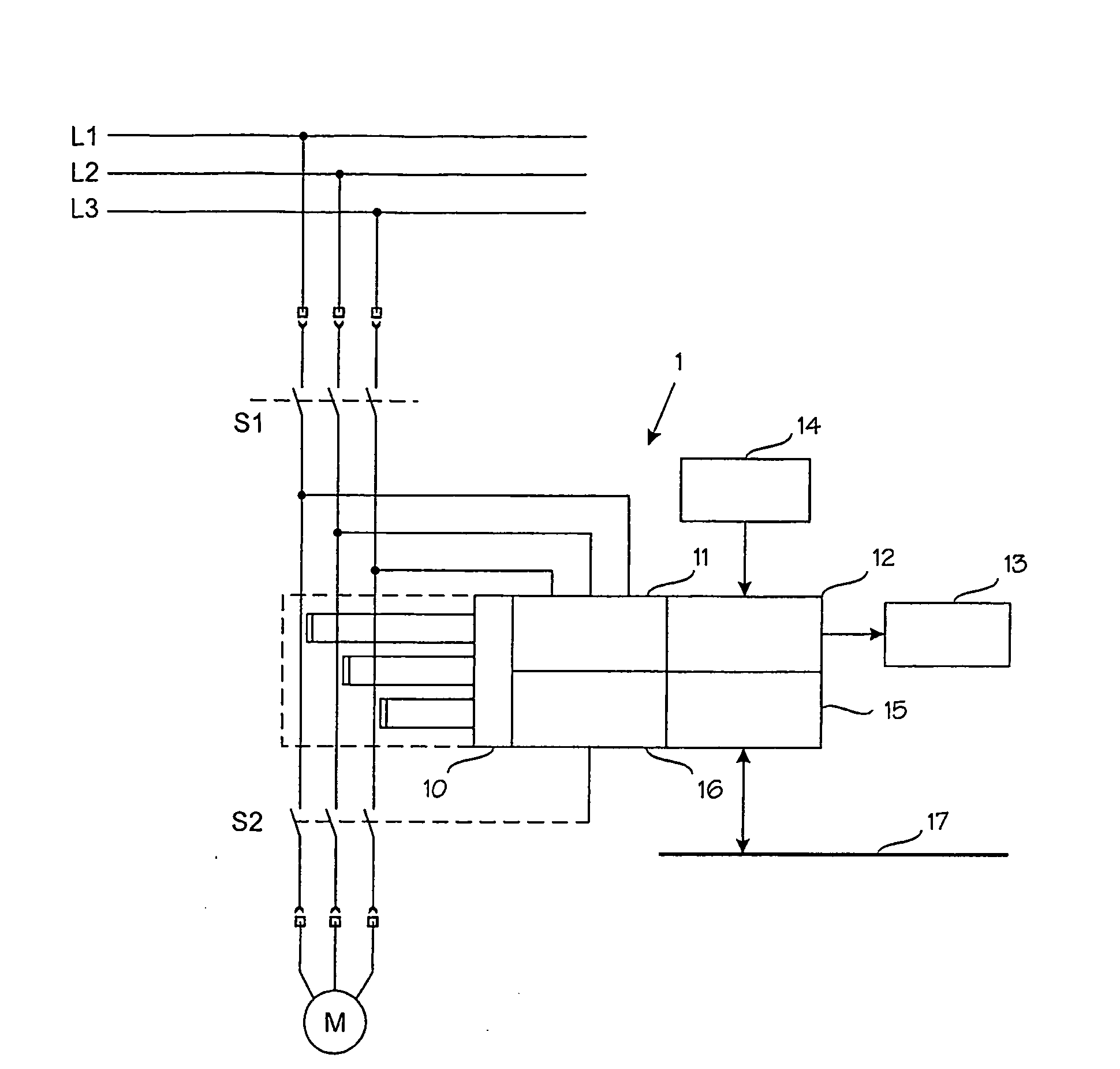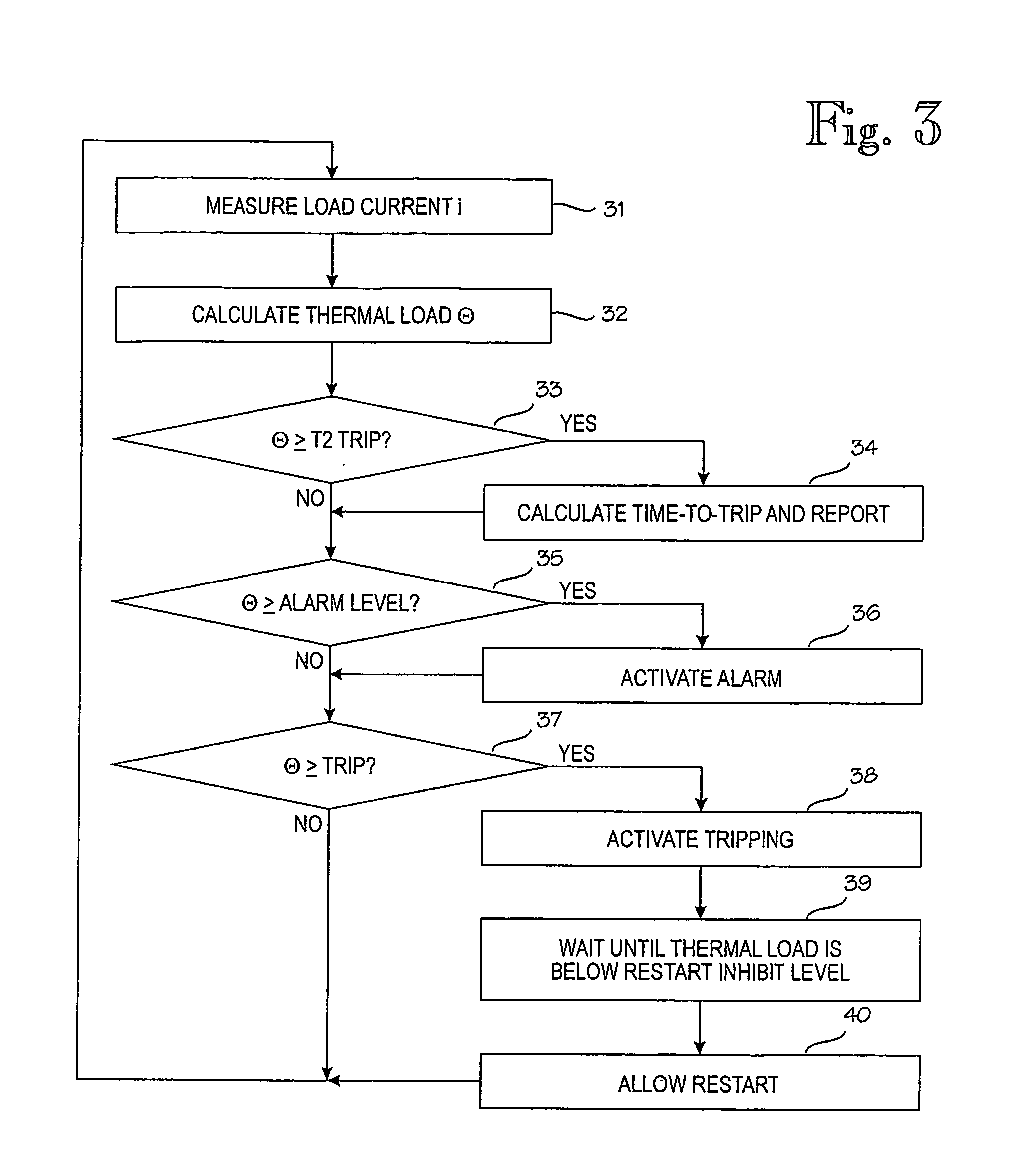Thermal Overload Protection
a technology of overload protection and thermal insulation, applied in the direction of emergency protective arrangements responsive to undesired changes, dynamo-electric converter control, motor/generator/converter stoppers, etc., can solve the problems of motor damage, stator coil isolation damage, and difficulty in placing sensors correctly, so as to reduce power consumption, production costs and physical size of the device, the effect of less memory
- Summary
- Abstract
- Description
- Claims
- Application Information
AI Technical Summary
Benefits of technology
Problems solved by technology
Method used
Image
Examples
Embodiment Construction
[0022]In FIG. 1, a thermal overload protection is coupled between an electric motor M or other electrical device to be protected and a three-phase mains current supply L1, L2 and L3. S1 is a main mains switch, e.g. manually controlled, and S2 is a release switch controlled by the overload protection and controlled with a trip signal TRIP. The overload protection 1 measures the current load of each phase L1, L2 and L3 of the mains current supply of the motor M with a current measurement unit 10, which is based on current transformers, for example. In addition, the overload protection 1 may comprise a measuring unit 11 for measuring phase voltages. Further, the overload protection 1 preferably comprises a user interface, i.e. a human-machine-interface (HMI) 12, with a display 13 and a keyboard 14. Furthermore, the overload protection 1 may comprise a data communication unit 15 connected to a local area network (e.g. Ethernet), a bus, a field bus (e.g. Profibus DP) or another data comm...
PUM
 Login to View More
Login to View More Abstract
Description
Claims
Application Information
 Login to View More
Login to View More - R&D
- Intellectual Property
- Life Sciences
- Materials
- Tech Scout
- Unparalleled Data Quality
- Higher Quality Content
- 60% Fewer Hallucinations
Browse by: Latest US Patents, China's latest patents, Technical Efficacy Thesaurus, Application Domain, Technology Topic, Popular Technical Reports.
© 2025 PatSnap. All rights reserved.Legal|Privacy policy|Modern Slavery Act Transparency Statement|Sitemap|About US| Contact US: help@patsnap.com



